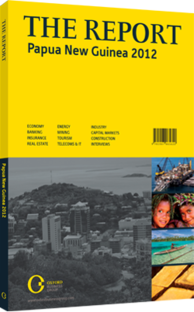Bank South Pacific: Banking
THE COMPANY: Incorporated in 1974, Bank South Pacific (BSP) has grown to become the largest bank in the South Pacific. BSP is also Papua New Guinea’s largest bank, despite the presence of international competitors. BSP was listed on the Port Moresby Stock Exchange in 2003, and the company has subsequently made acquisitions and opened operations in Niue (2004), Fiji (2006) and the Solomon Islands (2007). BSP’s presence in the Pacific includes 41 network branches in PNG, 20 in Fiji, seven in the Solomon Islands and one in Niue. Despite the significant acquisitions made over the years, BSP has maintained solid growth in profits. Net profit after tax grew at an average rate of 35% between 2003 and 2011. The company reported net profit after tax of PGK533.9m ($254m) for 2011, an increase of 26% on 2010. Total assets grew at an average rate of 27% over the last five years. BSP maintains more than half of the market share in PNG, with 51% of loans and 54% of deposits. Across its Pacific markets, the company’s overall share is around 38% in loans and 47% in deposits. BSP currently services over 1.1m business banking customers throughout the Pacific. As of 31 March 2011 the company had total assets valued at PGK13bn ($6.2bn). BSP’s capital adequacy ratio is steady at 24%, well in excess of the 12% minimum requirement set by the central bank. Although the current ratio is high, it is in line with current best estimates that would result if the Basel ll and Basel lll requirements were to be applied. The bank’s cost-to-income ratio increased from 54% in 2010 to 58% in 2011, reflecting costs associated with its transformation programme to upgrade systems and client services. There will be a reduction in this figure as new computerisation and internal changes are incorporated into the programme. Any reductions in costs will be directly reflected on the profit line. The introduction of new banking services throughout PNG is so far proving to be successful, with a yearon-year increase of 42.2% to $196m in non-interest revenue for 2011. Non-interest income includes fees, commissions, foreign exchange gains/losses and revenues from the insurance business in Fiji. The firm continues to expand its electronic banking systems throughout PNG and the Pacific. It now has 348 ATMs, a rise of 231 machines in three years. The rapid growth in minerals in PNG has expanded the banking market, particularly in fees generation and other income sources. BSP is at the forefront of service change, and non-interest income will represent a larger portion of its profit growth.
Liquidity in the banking system in PNG remained high in 2011 as the PNG liquefied natural gas project construction phase reached full speed. The central bank responded by increasing its kina facility rate from 7% to 7.5% in 2011. Increased exports supported by high commodity prices in 2011 have contributed to the raised liquidity levels. The net effect to BSP is the low returns on central bank bills that put downward pressure on its net interest income.
Standard & Poor’s revised its outlook for PNG's long-term sovereign credit rating from B+ stable to B+ negative. BSP’s credit rating has, by default, fallen to the same level, as its rating cannot exceed that of PNG’s sovereign credit rating.
DEVELOPMENT STRATEGY: Growth and banking efficiency remain BSP’s focus in its strategy going forward. The successful implementation of the company’s modernisation programme within the next three years will increase efficiency and reduce banking costs. BSP has achieved strong growth in assets and profits over the years, and its performance and prudential ratios remain well above the regulated requirements. The bank has a well-diversified income stream to capitalise and grow organically with the national economy and other Pacific island nations. BSP’s shareholders are well compensated through the bank’s high-dividend payout policy (75% of earnings) and by the projected share price growth.
You have reached the limit of premium articles you can view for free.
Choose from the options below to purchase print or digital editions of our Reports. You can also purchase a website subscription giving you unlimited access to all of our Reports online for 12 months.
If you have already purchased this Report or have a website subscription, please login to continue.

